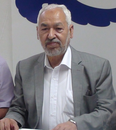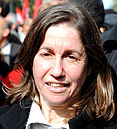Tunisian Constituent Assembly election, 2011
|
|
||||||||||||||||||||||||||||||||||||||||||||||||||||||
|---|---|---|---|---|---|---|---|---|---|---|---|---|---|---|---|---|---|---|---|---|---|---|---|---|---|---|---|---|---|---|---|---|---|---|---|---|---|---|---|---|---|---|---|---|---|---|---|---|---|---|---|---|---|---|
|
||||||||||||||||||||||||||||||||||||||||||||||||||||||
|
All 217 seats to the Constituent Assembly 109 seats needed for a majority |
||||||||||||||||||||||||||||||||||||||||||||||||||||||
| Opinion polls | ||||||||||||||||||||||||||||||||||||||||||||||||||||||
| Turnout | 51.97% | |||||||||||||||||||||||||||||||||||||||||||||||||||||
|
||||||||||||||||||||||||||||||||||||||||||||||||||||||
|
||||||||||||||||||||||||||||||||||||||||||||||||||||||
An election for a constituent assembly in Tunisia was announced on 3 March 2011 and held on 23 October 2011, following the Tunisian revolution. The Assembly had 217 members. It was the first free election held in Tunisia since the country's independence in 1956, as well as the first election in the Arab world held after the start of the Arab Spring.
The result was announced after counting began on 25 October 2011 and Ennahda won a plurality of votes.
Senior party members of the disbanded former ruling party, the Constitutional Democratic Rally, were banned from standing in the election if they had been active in politics within the last ten years. Originally, the ban would have applied to all former senior party members (spanning 23 years instead of 10), but this was revised after protests by former RCD members.
The election campaign officially started on 1 October 2011.
The voting system allocated seats through proportional representation within various multi-member districts on closed lists based on thresholds set as the quotient of votes cast divided by seats contested. All party lists were required to alternate between male and female candidates.
Each governorate of Tunisia had a designated number of seats based on population (Tunis, Sfax, and Nabeul, the three largest governorates by population, were split into two electoral districts each). Districts within Tunisia ranged in size from four to ten seats. Each delegate represented approximately 60,000 inhabitants, in a country of 10.5 million.
...
Wikipedia





